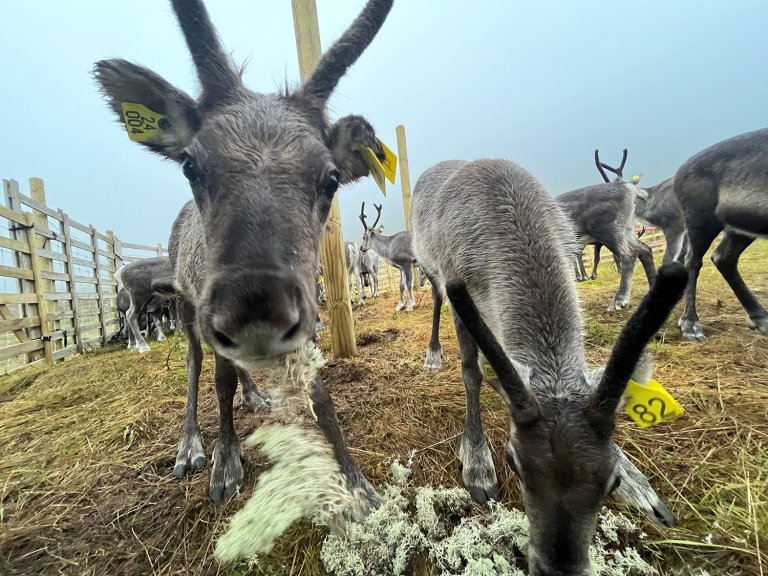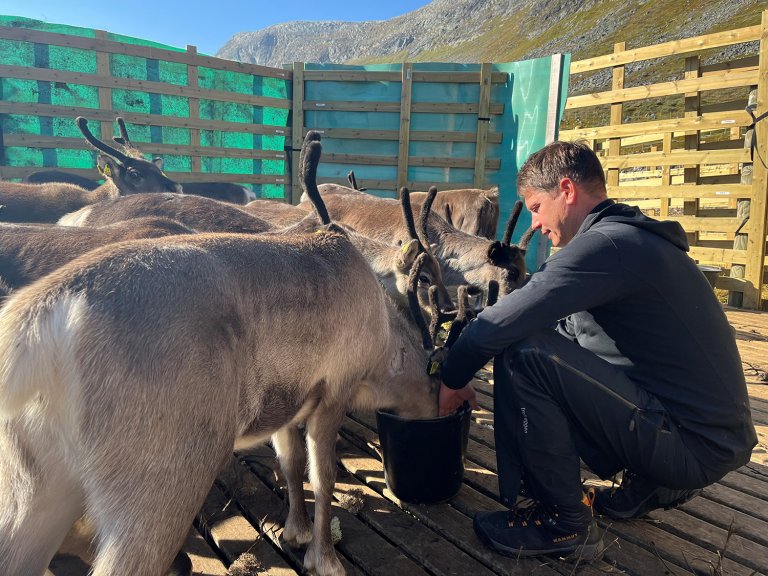
CWD, also known as Chronic Wasting Disease, is a prion disease that destroys the brains of deer. It is for them what mad cow disease is for cattle and Creutzfeldt-Jakob disease (CJD) is for humans – a fatal brain disease.
In 2016, the Norwegian Veterinary Institute detected the disease in reindeer for the first time, specifically in wild reindeer in Southern Norway. This was also the first time CWD was confirmed in Europe.
Researching Norwegian Reindeer in Canada
To better understand the disease, Norwegian researchers are participating in the international project "Emerging CWD," led by Sylvie Benestad, a prion disease researcher at the Norwegian Veterinary Institute.
The project investigates disease progression, the potential for CWD strains to spread among deer species, and the risk of infecting new species, including humans. It involves key groups working on CWD in both Europe and North America.
The project is closely tied to the United States and Canada, where CWD has spread since the 1960s and 1990s. Increasingly, more animals and regions are affected, leading to death and suffering among animals and raising concerns about hunting and the safety of consuming meat from infected animals.
For the first time, the project is conducting infection trials on Norwegian reindeer. Previously, such trials were only conducted with North American reindeer and CWD prions from that continent.
–Since the disease is historically new to Europe, there is a significant need for knowledge generated from Norwegian animals and pathogens found in Norwegian wild reindeer, says Jørn Våge, CWD coordinator at the Norwegian Veterinary Institute.
The 2016 discovery led to drastic measures. The entire wild reindeer population in Nordfjella Zone 1 was culled and removed from the area, which remains vacant and without reindeer. A few years later, infections were also detected on the Hardangervidda plateau, home to Europe’s largest wild reindeer population. Except for a small forest reindeer population in Finland, Norwegian wild reindeer are the last remaining animals of their kind in Europe.
A Threat to Wild Reindeer, Reindeer Husbandry, and Sami Culture
Wild reindeer (Rangifer tarandus) is a "responsibility"- species," classified as near-threatened by the Norwegian Biodiversity Information Centre in 2021. Norway bears significant responsibility for preserving the European wild reindeer population.
If CWD spreads from Hardangervidda or Nordfjella, it would also threaten reindeer in herding practices, potentially leading to severe consequences for the industry and the Sami culture in the Nordic region.
Other Deer Species, Hunting Culture, and Prion Strains
The spread of infectious CWD also threatens moose, red deer, and roe deer. Trials using pathogens from Norwegian reindeer suggest that extreme caution is needed to prevent CWD from spreading into populations of other deer species. If this occurs, it would jeopardize both animal welfare and hunting traditions. Sporadic cases of CWD have been found in Nordic moose and Norwegian red deer, but these prion strains are believed to be non-contagious between living animals, unlike the strain in reindeer. Nonetheless, all prion strains are expected to cause disease if animals ingest them, and once in the environment, they remain infectious for a long time.
Carefully Selected Animals
–We were meticulous in selecting the animals for the trial, Våge explains. He spent three weeks in the field with local reindeer herders to recruit animals. -The reindeer had to be brought in from the mountains, adapted to feed, socialized to become accustomed to humans and handling, have certain genetic profiles, and be healthy, he explains. Thirteen female calves from the Filefjell reindeer herd were chosen.

The trial aims to determine whether specific genetic variants are less susceptible to disease development. Only female calves were included to avoid challenges associated with rutting males, as the trial spans several years.
The focus on genetic profiling stems from earlier research on infected populations in Nordfjella, where reindeer with specific gene combinations were found to have a higher risk of CWD infection. This project plans to test five different genotypes.

–The zoonotic potential of CWD—its ability to spread between animals and humans—has so far been assessed as very low. We hope this project will provide a better understanding of this as well, Våge says.
Santa Delivered the Reindeer
–In Norway, we lack sufficiently large facilities with adequate biosafety levels to conduct such a trial while ensuring good animal welfare. So, we contacted our Canadian colleagues and arranged to use their facilities in Ottawa,"Våge explains.
This fall, the animals were flown to Canada, with layovers in Copenhagen and Toronto.

–Coincidentally, the man who helped us organize the transport of the reindeer to Canada was named Nissen (Santa) by surname. Despite the gravity of the situation, it created a somewhat tragicomic association, as if Santa were flying his reindeer across the Atlantic to Canada, Våge recalls.
About the Project
The project, titled "Chronic wasting disease prions from Norwegian cervids: Assessing the pathogenesis, shedding, spillover, and zoonotic potential" and nicknamed "Emerging CWD," is funded by the Research Council of Norway (project no. 334585), the Norwegian Veterinary Institute, and significant contributions from international collaborators. It is a six-year project running from 2023 to 2029, with activities carried out in various laboratories across Europe, the USA, and Canada.

